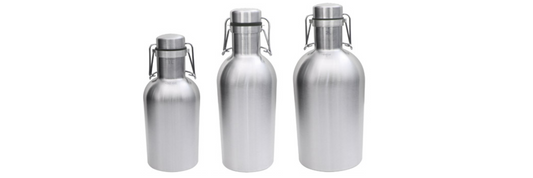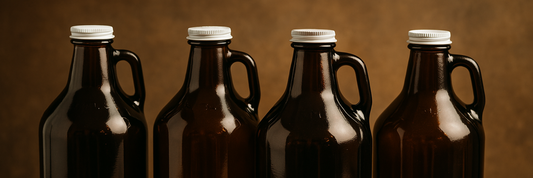Bag chaos? Not any longer! Learn how to manage your reusable bag collection and experience the power of organized reuse. This article delves into why everyone and businesses require bag-savvy techniques, as well as practical tips for living a clutter-free.
Why Need to Organize Reusable Bags?
Know to organize reusable bags offer several benefits for both individuals and businesses. These benefits are explained in the following.
What Are the Right Way to Wash Your Reusable Bags?
Which bags should be used for shopping?
For Individuals
- Convenience and Efficiency: Less time and effort are wasted searching for the correct bag.
- Space Optimization: Folding techniques and dedicated storage options maximize space and keep bags from clogging drawers, cabinets, and floors.
- Eco-friendliness and sustainability: In contrast to single-use plastic bags, properly stored bags last longer and require fewer replacements.
- Individual Satisfaction: Having a neat system can make you proud of it and help create a clutter-free, aesthetically beautiful living space.
For Businesses
- Improved consumer Experience: Easy access to clean and varied bags in various sizes and materials responds to consumer needs and preferences.
- Brand Presentation: Consistent design, high-quality materials, and customization possibilities demonstrate your commitment to sustainability and increase brand recognition.
- Inventory Management: Tracking, mending, and clearing bags guarantee adequate stock, save waste, and simplify storage.
- Marketing Opportunities: Using reusable bags to promote your business and get customers involved in sustainable projects is a great way to get people to use them.
WHO Needs Custom Logo Non-Woven Shopping Bags?
How Do You Declutter Reusable Shopping Bags at Home?
Individuals can manage their reusable bags by folding different types of bags, using storage solutions, labeling and categorizing them, and so on.
Ways to Fold Different Types of Bags
Small bags
- The Accordion Fold: Perfect for clutches and smaller bags, simply fold the bottom up in thirds, then fold the sides inwards like an accordion. This creates a compact package that fits perfectly in drawers or bins.
- The Envelope Fold: Ideal for flat pouches, tuck the bottom corners inwards diagonally to meet at the center. Fold the top flap down to create a neat envelope shape.
Large Bags
- The Flat Fold: Lay the bag flat, smooth out any wrinkles, and fold it in half or thirds depending on the size. This is a classic, space-saving option for canvas totes.
- The Triangle Fold:For a more compact option, fold the bottom corners of the bag inwards diagonally to meet at the center. Then, fold the top point down to create a triangle. This is ideal for storing bags on shelves or in drawers
Canvas bags and Tote Bags
- The Box Fold: Stand the bag upright, fold the sides inwards to meet in the center, then fold the bottom up to create a box shape. This maximizes storage space and keeps your totes organized.
- The Hanging Fold: For quick access, utilize wall space! Fold the bag in half lengthwise and hang it on a hook or over-the-door organizer. This is perfect for everyday totes you use frequently.
Storage Solutions for Every Bag
- Hanging Helpers: Use pegboard hooks or over-the-door organizers to suspend smaller bags, such as lunch totes and vegetable pouches. Put a label on each so you can easily recognize them.
- Bin Brigade: Bags can be sorted according to size, material, or use (groceries, errands, etc.). To maximize convenience, label the containers.
- Upcycled Delights: Repurpose old crates, suitcases, or laundry hampers into unique yet effective bag storage solutions. For personalizing, add a coat of paint or decorative accessories.

How to Designate Storage Space for Reusable Bags
It's important to take into account both your individual usage patterns and the special qualities of your reusable bags when designing a storage space for them. To assist you in setting up a system that keeps things accessible and organized, consider the following advice:
- Categorize your bags
- By size: Separate small bags (produce bags, lunch bags) from medium and large shopping bags. This helps you choose the right size for each task.
- By frequency of use: Keep your everyday bags readily accessible, while storing less-used ones in less convenient locations.
- By material: Group canvas bags together, mesh bags in another spot, and so on. This makes it easier to find specific types.
- Choose accessible locations
- High-traffic areas: Place frequently used bags near your door, in your car, or by the kitchen counter.
- Vertical space: Utilize walls and doors with hanging hooks, organizers, or shelves for small bags.
- Underutilized corners: Tuck away bulky bags in under-sink cabinets, under stairs, or in unused corners.
- Opt for space-saving solutions
- Folding techniques: Master the art of folding your bags to minimize their footprint. Try accordion folds for small bags, burrito folds for large ones, and triangle folds for canvas totes.
- Stackable bins and baskets: Label bins for different types of bags and stack them neatly for efficient storage.
- Hanging organizers: Over-the-door organizers or wall-mounted shelves are excellent for storing smaller bags and keeping them readily accessible.
Labelling and categorizing
Using labels and categorizing items can make them easier to identify and reduce the time needed to select bags.
Categorizing for Clarity
- Size Counts: Set aside a space for little lunch and produce bags, another for medium daily totes, and a third for giant supermarket haulers. You may then select the ideal bag for every occasion.
- Flyers with Frequency: Give your most used bags top priority by identifying them. Store your daily tote in your car or next to the door so it's always accessible. Bags that aren't used as often can be stored in less practical places, such as a closet shelf.
- Material Matters: Assemble comparable materials. Place canvas totes in a basket, hang mesh bags from a hook, and put plastic bags in a special bin. This makes locating the bag that best meets your needs simple.
Labeling for Efficiency
- Be Creative: Add memorable names, humorous messages, or even emojis to your bags with fabric markers, stencils, or iron-on patches.
- Clear and Concise: Make sure labels are easy to read and straightforward. Use acronyms such as "LUNCH" for lunch bags, "PB" for produce bags, or "GYM" for workout bags. This allows you to quickly see what's within.
- Double Duty: Write the bag's category (grocery, shopping, etc.) on one side and state its special qualities (waterproof, insulated, etc.) on the other.
How a business can organize reusable bags?
Keeping reusable bags organized for business needs a different strategy than for personal use, with an emphasis on inventory control, and customer experience. Here are a few useful tactics:
Customer Experience
- Designated storage: Place easily accessible but visually appealing storage near entrances, checkout counters, or product displays. Think of using obvious signage on hanging racks, shelves, or baskets.
- Variety in size and type: To meet the needs and preferences of a wide range of customers, provide a wide range of reusable bags in various sizes and materials (canvas, mesh, totes).
- Cleanliness and hygiene: Clean and sanitize the bags on a regular basis, especially between rentals or loan programs. Offer single-use liners for delicate goods or sloppy purchases.
- Promotional opportunities: Use reusable bags as marketing tools by printing your logo, slogan, or special offers on them. Give clients who bring their own bags discounts or other rewards.
Inventory Management
- Inventory management: Create a system for tracking lent or purchased bags, including size, kind, and condition. This assists you in keeping enough inventory and preventing shortages.
- Repair and maintenance: Create a process for mending small defects to help your bags last longer. Think about providing customers who purchase your branded bags with repair services.
- Retirement and decluttering: Take stock of your bags regularly and get rid of those that are broken or unusable. Give them to community centers or shelters, or recycle them properly.
- Cleaning and storage: Set up a specific area for the bags' cleaning and storage. Use effective storage alternatives such as hanging hooks, stacking shelves, or labeled bins.
In summary, understanding how to organize reusable bags has several advantages for both individuals and businesses. Reusable bag organization can be done in a variety of methods, such as folding, using a storage solution, labeling, and categorizing.









